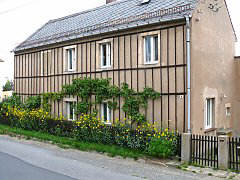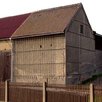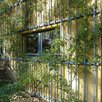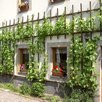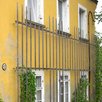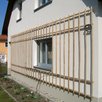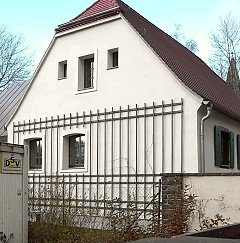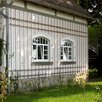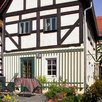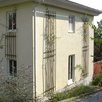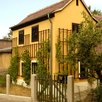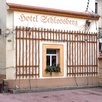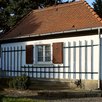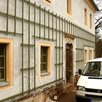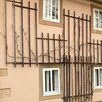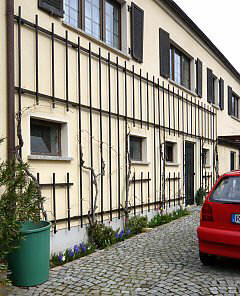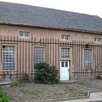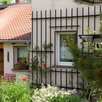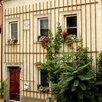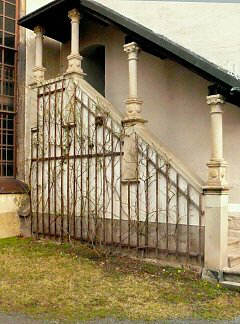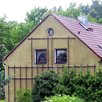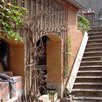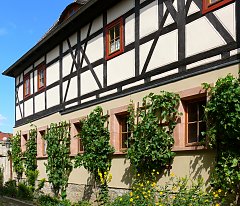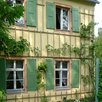Large Trellises - Design Tips
In the past, trellises were mainly used for cultivating grapes or fruit. For bigger and better harvests the trellises were often very large, some even covering the entire façade. And after all, one large trellis is more impressive than several small ones. How then do you place the cross beams and laths? Which designs are possible? With the examples and information here, you can even plan a French trellis- the classic 'treillage'! The sections under classic construction also provide useful information on wooden support trellises.
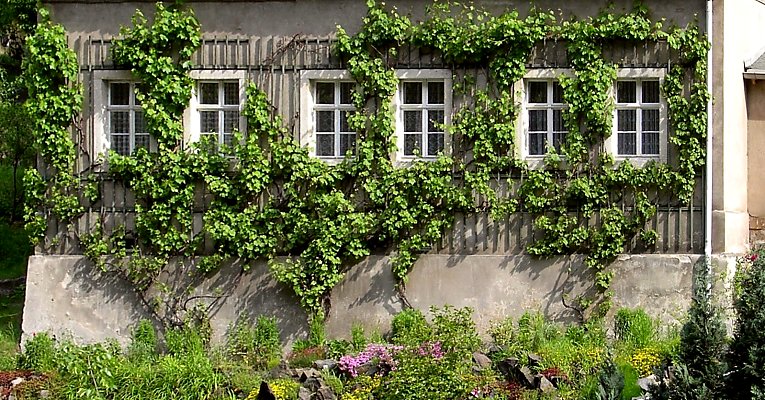
Simple Trellises
A trellis has to adapt to the windows of a façade. The simplest solution is to use long crossbeams (uninterrupted horizontal beams) across the entire width of the facade and only shorten the laths where necessary. The disadvantage is that the crossbeams end up coming very close to the windows. With high windows, the crossbeams are farther apart and the cross sections of the laths have to be larger/thicker, making them less graceful looking. Long crossbeams and laths can be divined into several parts for easier assembly, as described under the section on details.
Additional Crossbeams Between Windows (Interrupted Horizontal Axes)
For functional or design reasons, horizontal beams can be used not only above and below but also between windows. For an optimal visual effect, the discontinous lath segments should be placed at exactly the same height. Even above or below the windows, it will not always be possible to have a continous horizontal beam. Although the trellis may not have border or frame when you have breaks in the horizontal line, it will look lighter and less severe.
Additional Short Crossbeams
For various reasons it can be useful to add short horizontal beams, especially underneath windows. With several short crossbeams, they should be placed at the same height, so that they make an imaginary horizontal axis. Sometimes these crossbreams do not need wall anchorage; they can simply be mounted (screwed) to the back of the vertical laths.
Separation into Individual Trellises
Planning a complex trellis is a real challenge! Such a project can be divided into individual trellises: for example, 2-beam-trellises which have some distance from each other but are placed in such a way as to give the impression of a single trellis with continuous axes. This technique is somewhat difficult to implement and not always fully convincing, as you can see in the following photos.

